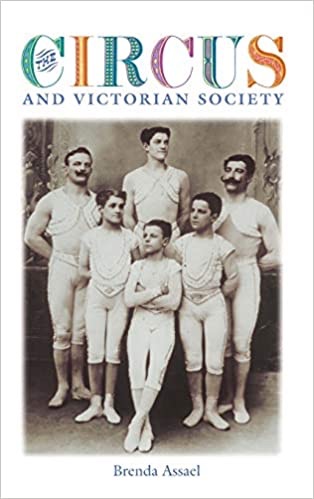The Circus and Victorian Society

It was during the Victorian era that the circus, whose origins lay in the fairground world, emerged in the form that we would recognise today. The circus was an entertainment that appealed across an otherwise class-divided society, its audiences ranging from poor pedlars to prestigious public figures like the Prince of Wales and the Duke of Wellington. What made the circus distinctive was that it was a form of commercialised leisure that sought respectability, at the very same time that many of its acts could be deemed grotesque, lewd or dangerous. The myriad ways in which this potential conflict was negotiated is a critical motif of my book.
The individual acts to be found within the Victorian circus ring (equestrian battle scenes, exotic animals, clowns, female acrobats, and child performers) can tell us a great deal about Victorian popular culture. The equestrian re-enactments of the Battle of Waterloo helped reinforce popularised visions of patriotic identity. Exotic animal acts dramatised the powerful reach of empire in the British imaginary. The controversy over the death-defying performances of female acrobats disclosed anxieties about women in the public sphere. Debates about "cruelty" in regard to child gymnasts spoke to changing conceptions of childhood. Popular understandings of the melancholy clown need to be understood as part of a broader interest among the Victorians in those who lived on the margins of society.
Indeed, in Hard Times, Charles Dickens was to present the circus as an opportunity for people to free themselves from the degradations of a ruthless industrial society. This romanticised vision of the circus remains in place even today, but it needs to be balanced by the fact that its Victorian manifestation did a very good job indeed of reconciling insiders and outsiders in nineteenth-century society. Many of those who managed, and performed in, the Victorian circus were the products of cultures that were itinerant, transnational, and fluid. The fact that this did not prevent the circus from becoming an important contributor to the creation of a national culture in the nineteenth century requires us to think in more sophisticated and challenging ways about how identities were fashioned and performed.
Reviews:
"In writing this exemplary cultural history, Brenda Assael succeeds not only in reconstructing the conditions behind the circus's transformation into commercial entertainment, but in providing an exceptionally full account of the social and political preoccupations of the Victorians." -Barry J. Faulk, Florida State University · Journal of British Studies
"With the high quality of its research, its scope and enlightening insights, and its eloquence, Assael’s The Circus and Victorian Society is highly recommended for professional historians, social scientists, and cultural critics, as well as for those generally interested in British history, and the history of culture and art- and of course, for circus fans and lovers." - Yoram Carmeli, University of Haifa · H-Net Reviews
"This book will constitute an invaluable starting point for any future work, whether in the field of cultural history or theatre studies, on the circus in Britain during this, or indeed any other period." - Helen Stoddart, University of Keele · English Historical Review
"This is a book that many people from across numerous disciplines will want to read, rich in insight and information...Brenda Assael writes with flair and lucidity, and she is, I suspect, just the sort of lively company you would like at a grand, popular spectacle." - Emily Allen, Purdue University · Theatre Survey
"Brenda Assael's voice is illuminating...Her book is a serious study." - Claudia Pugh-Thomas · Times Literary Supplement